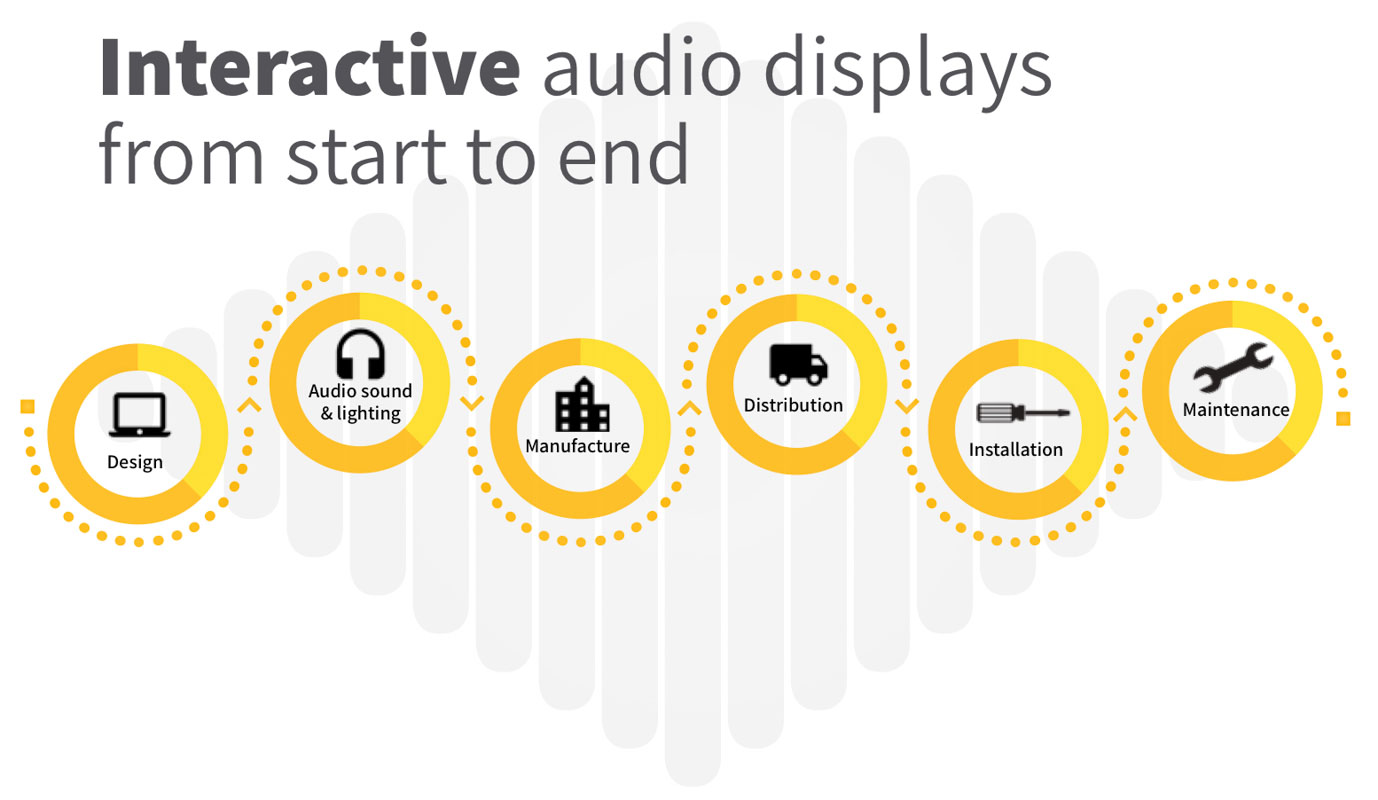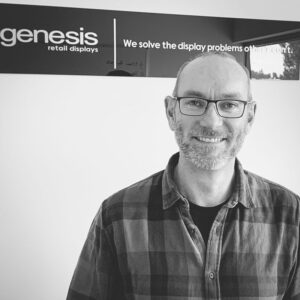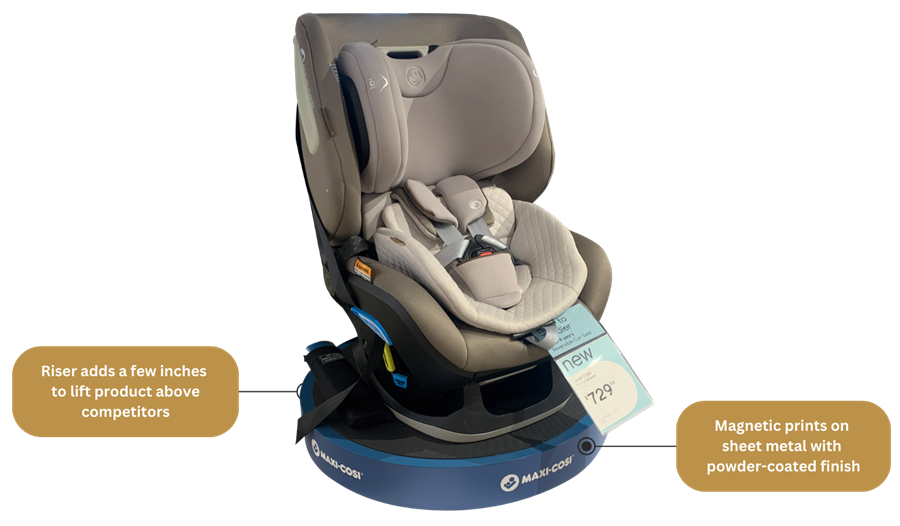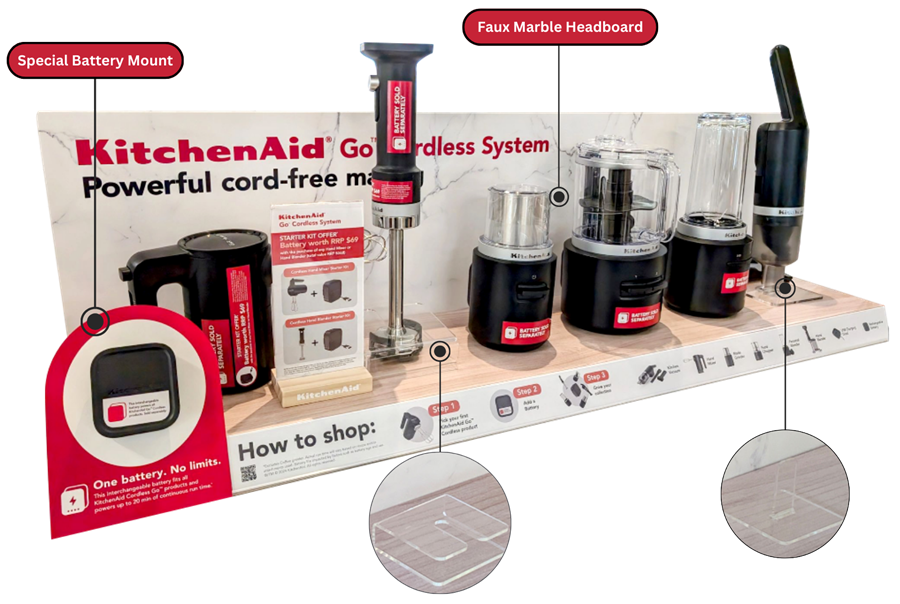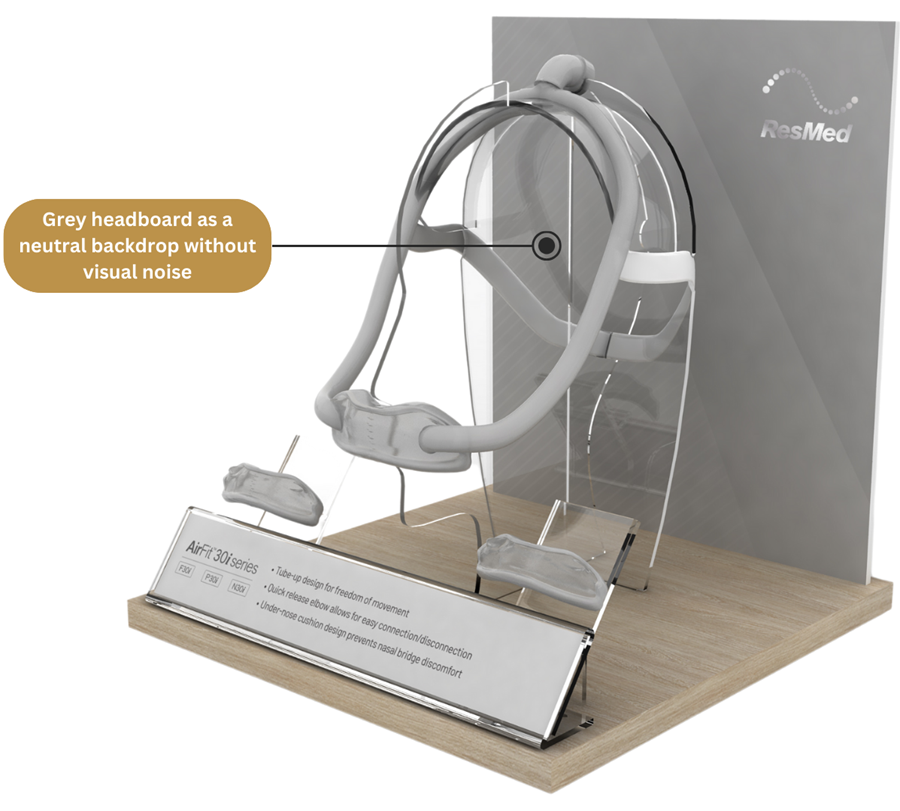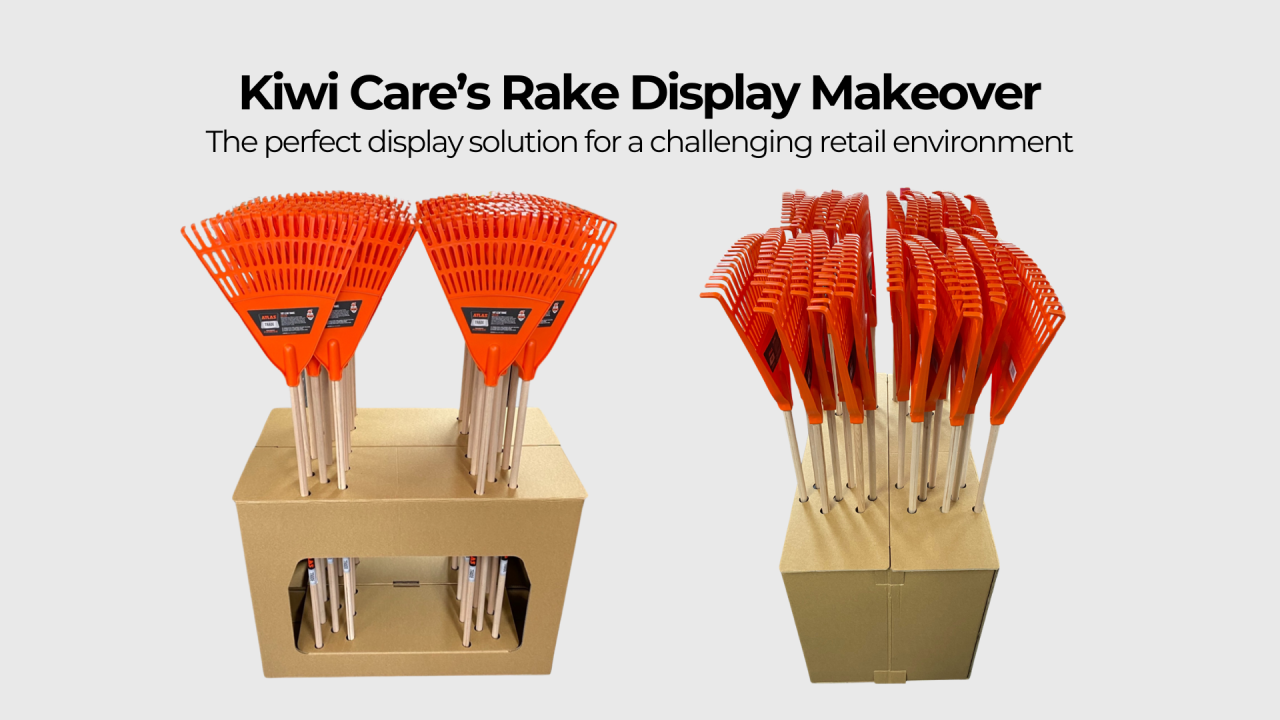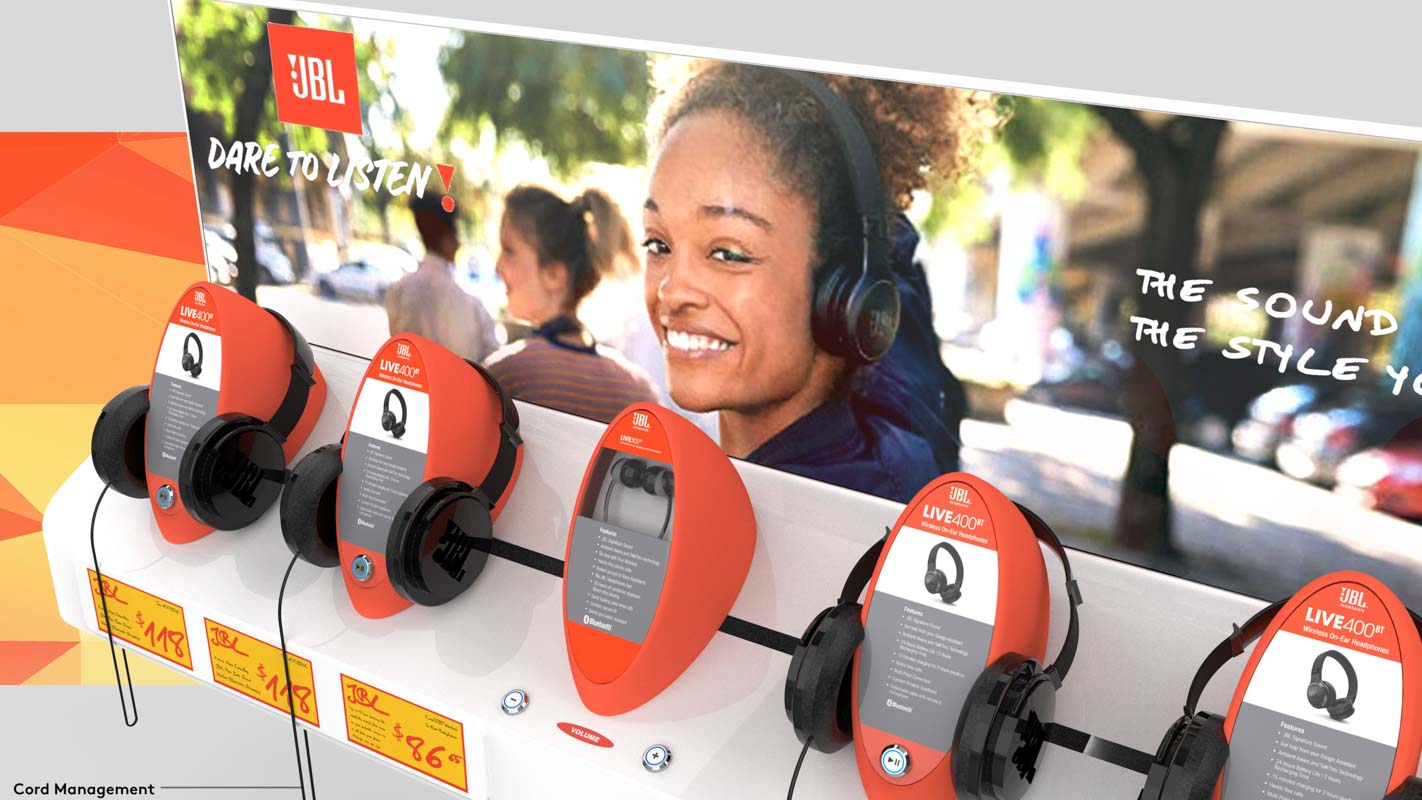
Headphone displays for retail
Custom design product displays that are interactive.
- HIGH QUALITY AUDIO CIRCUITS
- HIGH 'UPTIME', FULLY WORKING POINT OF SALE
- LIGHTING, SOUND & VIDEO
- CUSTOMISABLE SOLUTIONS FOR ANY RETAIL SPACE
the headphone display problem
All leading retailers have headphone displays that enable people to try on and listen to a variety of brands and types. The leading retailers like JB Hi Fi have over ear headphone brands like Bose, Beats by Dre, JBL, Sony or Sennheiser on display in their stores. Although most of the time when we visit these stores we can see that most of the displays aren’t actually working.
We once heard the phrase “Saving yourself poor” from an engineer and their reference was around trying to skimp too far on the price of components that then had the potential to lead to poor performance and maintenance costs later.
The same thinking applies to designing an interactive headphone display in a retail store. We see some that are done well, but many are done poorly & these are the lower cost designs that have been pumped out to meet a price which haven’t considered the shopper experience, the retail environment or the ongoing maintenance costs to the brand.
THE TOP HEADPHONE DISPLAY PROBLEMS IN RETAIL
Every time we visit a retail store to check on point of sale display executions we see the same common mistakes being made with headphone displays.
- There is no cable management – apart from presenting various OH&S issues, it makes a display look messy & not very inviting for a shopper to try out the products. So the money saved by not considering cable management is quickly lost by someone not wanting to use the display.
- The products are missing – retail is a simple game, have stock available, present it well & you will make sales. We see a number of headphone displays where the product is missing. Either it has been stolen or removed from the display because it no longer works. Genesis Retail Displays have experience working out how to solve these common retail point of sale display problems.
- The buttons are not working – sounds repetitive but if the buttons aren’t working then there is no demonstration. So you may have saved money on the display unit, but it if stops working after a few weeks you have actually gained nothing other than static shelf space while your competitor’s products are still demonstrable. Worst still, if you haven’t budgeted for regular maintenance you have no way of knowing what % of your displays are useful.
- There is no sound or lighting – with the retail shelf being so competitive it becomes more important to use either sound, video or lighting to attract attention. People are overwhelmed with the choices available in retail. So saving money by not including these elements can work out to be another false economy.
DO YOU REALLY SAVE MONEY ON CHEAP POINT OF SALE?
- Up front savings lost in retail execution.
- Lack of visibility hides true costs.
- Lost sales & conversion opportunities.
Let’s work through a practical example of how selecting a cheap point of sale solutions for your headphone display can cost money in the medium to long term.
So we will assume there is a AUD$300 saving per point of sale display module.
Then let’s assume one of these scenarios play out;
- The Retractable pull cords are not long enough to put headphones on your head and a shopper can’t really use them.
- The cords are all tangled and too hard to pull apart.
- The products have been taken from the display because there was no security cables.
- Audio buttons that do not play music or the video display does not turn itself on in the morning.
The average price for high quality over ear headphones is between $200 & $300, let’s assume in just one location you sell 2 units per week. Then lets assume it is 4 weeks before the broken display unit is reported & then another few weeks before it is actually repaired.
What does it mean?
- LOST REVENUE – Potentially $600 per week in lost retail revenue or $180,000 per week if the same problem exists with a poor design installed in 300 stores.
- LOST MARKET SHARE – if competitors have working displays.
- ADDITIONAL COSTS – needed to remedy the broken displays and products, this could be budget that isn’t available or need to be taken from other activities.
- LOST TIME – for sales opportunities as a Quarter could pass before you return to 100% operational efficiency.
why are point of sale displays so important?
Point of sale displays (POS) or point of purchase (POP) displays are the best way to attract shoppers in busy retail outlets and ultimately encourage them to purchase your product.
POS can be used on-shelf in retail stores or ideally be free-standing like the examples above. On-shelf creative POS displays can make your product stand out among your competitors. POP free standing floor displays (FSDU’s) can in effect create new space for your product offer when the store displays are already full.
By trying to influence the “last 3 feet” of the path-to-purchase you can increase shopper traffic into people actually buying your product, especially compared to items sitting on a normal shelf planogram.
As demonstrated in this example, POS displays come in many forms from more simple application such as wobblers, posters and bunting to cardboard counter displays, free standing cardboard displays and pallet displays to semi-permanent displays and even permanent displays.
Taken to the next level Interactive POS displays allow your shopping customer to know what your product is like rather than asking them to guess what the product is like. Displays that allow shoppers to touch, feel and experience the product provide a much more immersive experience for shoppers and have been shown to double sales.
